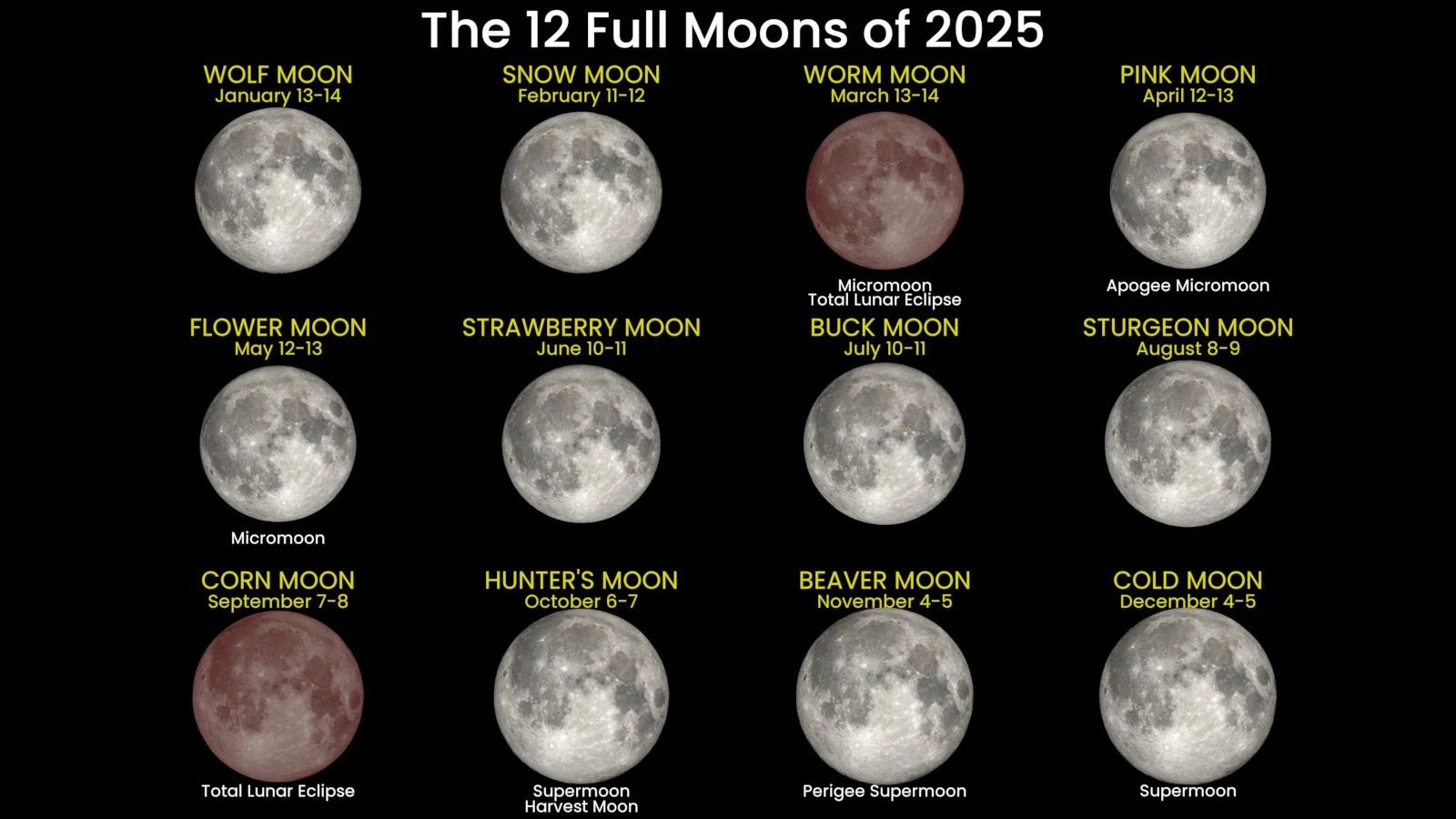This name comes from a list of Moon names first penned in the Farmer’s Almanac well over a century ago. They were taken from European and settler folklore, as well as the lunar calendar used by the Indigenous peoples from what is now the northeastern United States and the Great Lakes region.

This graphic collects all the relevant data about each of the 12 Full Moons of 2025, including their popular names, whether they are a ‘super’ or ‘micro’ Moon, a ‘perigee’ or ‘apogee’ Moon, and whether they are remarkable in some other way (Harvest Moon, lunar eclipse, etc.). Credit: Scott Sutherland/NASA’s Scientific Visualization Studio/Fred Espenak
According to The Old Farmer’s Almanac: “This is the time of year when beavers begin to take shelter in their lodges, having laid up sufficient food stores for the long winter ahead. During the fur trade in North America, it was also the season to trap beavers for their thick, winter-ready pelts.”
Other Indigenous names for this Moon are Digging (or Scratching) Moon (Tlingit), Deer Rutting Moon (Dakota and Lakota), Whitefish Moon (Algonquin), Frost Moon (Cree and Assiniboine) and Freezing Moon (Anishinaabe).
Indigenous Moons
In popular culture, today, these names are used only to refer to the Full Moons. However, they are actually part of the lunar calendar the Indigenous peoples of North America used to track the passage of time throughout the year. Each name, therefore, referred to one full cycle of the Moon, from one New Moon to the next.

The phases of the Beaver Moon in 2025. (NASA SVS/Scott Sutherland)
“From the Full Moon cycles, it was noted that certain things happened in the environment. The weather, plants, animals and temperature seemed to follow the cycles of the Moon. One of the patterns that became apparent was that there were 13 Full Moons that occurred before everything seemed to start all over again. Thus a 13 Moon cycle was identified,” Wilfred Buck, Researcher and Knowledge Keeper of the Opaskwayak Cree Nation, wrote on the Canadian Space Agency website.
“When Europeans made contact with the First Nations peoples of the Americas, it was evident that some Indigenous peoples followed a lunar calendar depicted on the back of a turtle’s shell. Turtle shells have 28 smaller outer edge scutes, representing the number of days from one full Moon to the next, and 13 larger central scutes, representing the 13 moon cycles. The turtle (Mikinak Ministik) held a special place in the various cultures of Indigenous people,” Buck explained.

